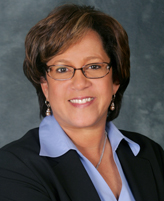The Journal Spring 2012
Considering Going Public?
[author-style]By Robert W. Van Arnum, CPA, Partner[/author-style]
 Many private companies consider going public at some point in their business growth strategy. On the surface, this sounds like an exciting idea, and becoming a public company does offer some advantages. However, the transformation from a private to public company is a very detailed process. There are many financial, business and strategic factors that must be taken into consideration when making this decision.
Many private companies consider going public at some point in their business growth strategy. On the surface, this sounds like an exciting idea, and becoming a public company does offer some advantages. However, the transformation from a private to public company is a very detailed process. There are many financial, business and strategic factors that must be taken into consideration when making this decision.
A company “goes public” when it sells securities, usually in the form of shares of common stock, to the general public for the first time. These shares are then traded through an investment banking firm on a recognized stock market or listing. Such a sale requires the company to file a registration statement with the U.S. Securities and Exchange Commission (“SEC”) in accordance with the Securities Act of 1933. While securities may be sold to the general public by other means, the term “going public” refers to those instances where a 1933 Securities Act filing is required. The process is also called the “initial public offering” or IPO.
 There are several advantages a company can experience when going public. Greater access to capital is the most distinct benefit. It is also a sign of success, credibility and accomplishment. IPOs can generate publicity for the company and increase public awareness. Future stakeholders might consider this achievement important if they are looking to transact business with the company. Additionally, it can provide an easy vehicle for a liquidity event for the company’s majority owner(s) if and when they decide to “cash out.”
There are several advantages a company can experience when going public. Greater access to capital is the most distinct benefit. It is also a sign of success, credibility and accomplishment. IPOs can generate publicity for the company and increase public awareness. Future stakeholders might consider this achievement important if they are looking to transact business with the company. Additionally, it can provide an easy vehicle for a liquidity event for the company’s majority owner(s) if and when they decide to “cash out.”
Once a company makes a decision to go public, the following questions must be considered in order to move forward:
- What is the desired timing or culmination of the event?
- Who will be on the “going public” team? This team will consist of members of management and a variety of highly-specialized professionals such as lawyers and accountants.
- What underwriter will be chosen? This is a very important position because the underwriter acts as the broker of the shares to the public. The underwriter is also important long-term should the company continue with other offerings once public.
- What stock exchange or listing does the company want to sell shares on or join? There are a variety of choices and requirements here. For example, most small companies go with the NASDAQ, while larger companies may go with the New York Stock Exchange.
An elaboration on some of the above points follows:
CHOICE OF AN UNDERWRITER.
If the company is considering an initial public offering, it must determine whether to invite several investment banking firms or underwriters to meet with the company and submit proposals. From this process, an underwriter will be selected, and an underwriter agreement will be signed.
PREPARATION OF A REGISTRATION STATEMENT.
Becoming a public company can be an exciting and —down the road— a worthwhile endeavor. However, for any company considering going public, the decision should not be taken lightly. The costs, time and effort required for the initial closing must be evaluated.
Going public involves the preparation of a registration with the SEC that must be approved by them and declared effective before the stock is actually sold to the public. The SEC does not evaluate the merit or value of the securities that it reviews. It only determines whether the disclosures made in the registration statement and the prospectus are complete and clear enough to give the investor adequate information. Writing the registration statement to comply with SEC requirements is a team effort of management, underwriters, attorneys and accountants. This is usually the most time-consuming step in the process of going public.
CLOSING AND SALE OF SECURITIES.
A closing is held after the registration is declared effective by the SEC, and the offering commences. The underwriters typically remit the funds to the company once they have received the funds from their customers for the newly-sold securities.
The financial costs of becoming a public company should also be considered —both initial and recurring. These expenditures include the following:
- Underwriter’s commission (e.g. a percentage of the total proceeds)
- Attorney fees
- Auditor fees
- Listing fees to the exchange
- Compliance with the Sarbanes-Oxley Act of 2002
- Annual and quarterly filings with the SEC
- Proxy statements and annual meetings
- Form 8-K reporting (certain events require reporting)
- Enhanced corporate structure and personnel
- Audit committee governance
Becoming a public company can be an exciting and —down the road— a worthwhile endeavor. However, for any company considering going public, the decision should not be taken lightly. The costs, time and effort required for the initial closing must be evaluated when making the decision and thereafter in order to maintain compliance with SEC regulations.
Getting Involved Has Its Benefits
[author-style]By Julia Van Saun, CPA, MS[/author-style]
Whether you participate in activities held by your company or attend external networking events, getting involved is imperative to putting your career on the fast track. No matter how new you may be to an organization, you are opening doors to future opportunities. Here are a few simple tips on how to get your name out there:
FORM A TEAM FOR A CHARITY RUN OR PARTICIPATE IN A FOOD DRIVE
Many companies are community-focused and are comprised of management who sit on various nonprofit boards. While you may not yet have the expertise to sit on a board, there are still many ways that you can contribute. By forming a team for a charity run or heading up a food drive, you are showing that you possess the ability to lead and enjoy giving back to the community. You will also have the opportunity to meet other professionals and start growing your network.
ATTEND PROFESSIONAL NETWORKING EVENTS
Start building your network! In addition to giving you the opportunity to meet others in your industry, networking events also provide you with the chance to mingle with professionals from related areas. The key, however, is to follow up. Send an email or a LinkedIn invitation after the event to ensure that you stand out to the individuals you met. And remember that as your career advances, the other professionals that you have met at these events are progressing as well. This means that your peers could act as a constant resource.
PARTICIPATE IN SPEAKING OPPORTUNITIES
No matter what your profession, finding the time to go above and beyond your daily responsibilities can be difficult, yet very fulfilling. The first step is making the commitment to spend a few hours on developing yourself professionally outside of your “normal” tasks.
Whether through a professional association or at your own company, presenting on a topic in which you have an expertise can be extremely rewarding. You will be recognized as a “thought leader” to those in attendance and will get a great deal of publicity for your participation. Webinars have also become a great tool for presenting subject matter to a large audience at a low cost, and you will still reap the benefits of a live presentation.
JOIN YOUR COMPANY SOFTBALL TEAM, OR FORM ONE!
Even though you see your colleagues all day long, this gives you a chance to interact with them in a more relaxed setting. If you don’t have a softball team, take the initiative to form one. Participating in extra-curricular activities shows management that you enjoy working for the company and are team-oriented. Plus, taking home the trophy never hurt anyone!
MAKE EVERY OPPORTUNITY A NETWORKING OPPORTUNITY
Get to know the people who you work with. If you are at a company event and sitting near a co-worker who you don’t know, introduce yourself. When you are walking around the office during breaks, find a group that you may not be familiar with and join their conversation. Turning co-workers into friends can be very beneficial—both personally and professionally.
No matter what your profession, finding the time to go above and beyond your daily responsibilities can be difficult, yet very fulfilling. The first step is making the commitment to spend a few hours on developing yourself professionally outside of your “normal” tasks. A successful career begins with you, and the long-term rewards truly outweigh the demands.
Preventing Theft In Your Business
[author-style]By Fatema Kazmi, CPA[/author-style]
The most available asset to a thief in a business is cash. In some cases, businesses have very tight and involved controls, while others barely have any controls, making it very easy for employees to steal. Here are some examples of lax situations which may be tempting some employees to steal:
ISSUE AT HAND:
One employee is responsible for, or has access to, the handling, recording and mailing of cash disbursements.
SCENARIO:
That employee creates a non-existing vendor who sends the company invoices, which are paid. Cash is stolen through this situation.
CONTROL:
One employee should receive the invoice and then check that the backup documentation is correct, goods and/or services have been received and approve the payment. An independent employee should pay the bill.
ISSUE AT HAND:
The person receiving the checks also posts to customer accounts.
SCENARIO:
Every week this person diverts a few checks that come in, and instead of posting them to the correct customer, they are deposited into a non-company account.
CONTROL:
The person who receives the checks should be independent of the person who posts to the customer’s account.
ISSUE AT HAND:
The CEO of a not-for-profit organization has given a signature stamp to someone in the fiscal department to write checks.
SCENARIO:
That person starts paying his or her personal bills through the company’s books, recording the expense to a different account each time.
CONTROL:
Someone independent in the fiscal department should spot check on a monthly basis to make sure expenses are proper. Just the thought of someone reviewing may deter an employee from stealing.
ISSUE AT HAND:
An employee that has cash receipts or cash disbursement access also reconciles the bank statement.
SCENARIO:
This employee creates a check to himself in the same amount which is due to a vendor and deposits the check into a bank account.
CONTROL:
An independent person should prepare bank reconciliations and have access to cancelled checks to ensure that the correct vendor is paid; the check number sequence is correct; and no manual checks were written.
ISSUE AT HAND:
An employee is able to wire-up to a certain amount of funds from the company’s bank accounts without authorization. The bank calls to confirm wires of funds on a sporadic basis, but the bank contact is the same person.
SCENARIO:
A employee at an organization can make wire transfers to another account while making it seem like the transfer is paid to proper vendors.
CONTROL:
The company should have the bank confirm all wire transfer transactions with an independent employee within the company to reduce the risk of improper transfers.
These are just a few illustrations of what can happen when cash is not properly monitored. The situations mentioned can apply to any business or not-for-profit organization. The important thing to remember is that there needs to be checks and balances, and they should be communicated to your staff. The threat of being caught serves as a deterrent. These situations could also be applied to other areas such as sales, purchases, inventory, payroll and many others.
The Alphabet Soup Of Philanthropy
[author-style]By Raymond G. Russolillo, CPA/PFS, CFP®
Family Wealth Services Partner[/author-style]
Informal charitable giving generally involves real-time contributions of cash, securities or other property to charitable organizations with fairly straightforward income and transfer tax implications. When charitable giving rises to the level of more formalized and systematic philanthropic giving, donors should consider the “alphabet soup” of planning options. These various tools and techniques enable one to exert more control over the ultimate disposition of assets while customizing the timing and amount of gifts over one’s lifetime and beyond.
For most people, the timing of their charitable giving is as important as getting money into the hands of their favorite charities. This can present a planning issue for those philanthropic taxpayers with large paychecks or a significant liquidity event who are undecided about which charity to ultimately benefit. Such folks may want to consider the use of one of the following vehicles to both accelerate their current donations and defer distributions to the ultimate charities:
DONOR ADVISED FUND (DAF)
Donor advised funds are public charities that are sponsored by either charitable or commercial organizations and enable the individual to currently fund a charitable investment portfolio while retaining limited control over the assets and ultimate grants. No current grants into nor out of the fund are required. They effectively serve as a charitable pocketbook for the donor and can be established for as little as $5,000.
PRIVATE FOUNDATION (PF)
This is essentially a “private charity” that the donor or his/her designees control. PFs are best suited for those with substantial wealth and are often used to underwrite generations of family philanthropy. Five percent of the foundation’s value must be used for charitable purposes each year, and its income is subject to a nominal excise tax. Far more complex than DAFs, they work best with a minimum investment in seven figures.
For many proto-philanthropists, however, outright gifts during one’s lifetime may not always be the most appropriate approach. Because of this, techniques exist to enable the donor to benefit charity while retaining some financial benefit either individually or for one’s heirs:
CHARITABLE GIFT ANNUITY (CGA)
This is a partially deductible gift made to a public charity that results in an individualized fixed annuity contract between the donor and the charity. A portion of each annuity payment represents ordinary income and capital gain.
POOLED INCOME FUND (PIF)
This is also a partially deductible gift made —not to the charity but instead to a common investment trust established by the charity. PIFs pay variable amounts of income to the donor for life.
CHARITABLE REMAINDER TRUST (CRT)
Contributions to these split interest trusts are partially tax deductible based on the actuarial present value of the remainder interest in the trust. The donor (or other non-charitable beneficiary) retains the income interest from the trust for a period of years or his/her lifetime while the remainder interest is ultimately paid to a charitable remainderman. The annual income payout may be fixed or variable. They are more sophisticated, flexible, controllable and expensive than CGAs or PIFs.
CHARITABLE LEAD TRUST (CLT)
This is another type of split interest trust which is essentially the mirror image of a CRT —the charity receives the income from the trust for a period of years while the remainder is paid to a non-charitable beneficiary. Unlike the CRT, contributions to the CLT may or may not be partially tax deductible, depending on the legal structure of the trust.
By mixing and matching these various vehicles, the individual can devise a lifetime and/or testamentary philanthropic plan that will meet his or her personal planning objectives, satisfy his/her need for cashflow, and impact one or more causes in ways that are meaningful to him/her.
[featured-content title=”WS+B New Partners And New Orlando Office”]
WS+B is pleased to announce the addition of Timothy Larson, CPA, as an international tax partner in the firm’s New Brunswick office. Tim is a licensed New Jersey and Texas certified public accountant. He has been in the profession for almost 20 years and specializes in U.S. international taxation, corporate reorganizations, mergers and acquisitions and corporate taxation. Tim received his bachelor’s of business administration degree in accounting and master’s degree of public accounting in taxation from the University of Texas, Austin, TX.

WS+B is also pleased to announce the addition of Wendy Terry, CPA, to the firm’s Orlando, Florida office. With over 16 years of her career dedicated to public accounting, Wendy has extensive experience serving multinational clients in industries relating to manufacturing, distribution, technology, government contractors and employee benefits. Wendy is a graduate of Florida Atlantic University, Boca Raton, Florida, with a bachelor’s degree in accounting and is currently licensed as a certified public accountant in Florida, Georgia, Alabama, Texas, Missouri and North Carolina.

Wendy is also the partner-in-charge of WithumSmith+Brown’s brand new downtown Orlando, Florida, office, which opened in early 2012. “We expect to start with a small staff, but will certainly look to grow the new Orlando office quickly, with Wendy as the partner-in-charge,” says Bill Hagaman, WS+B’s managing partner. “We already have many clients who work and reside in the area, so we are thrilled with the opportunity to better serve them by having a physical office nearby.” The WS+B office is located at 189 South Orange Avenue, Suite 1150, Orlando, Florida.
[/featured-content]
The Journal is published by WithumSmith+Brown, PC, Certified Public Accountants and Consultants, for clients and friends of the firm. The information contained in this publication is for informational purposes and should not be acted upon without professional advice. Please contact any one of our offices with your inquiries.
How Can We Help?
